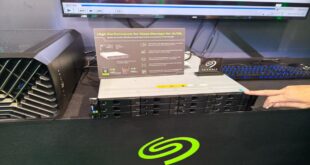Regular car maintenance is crucial in order to keep your vehicle running smoothly and to avoid unexpected breakdowns. By adhering to a car maintenance checklist, you can ensure that all the necessary tasks are carried out in a timely manner, prolonging the life of your car and saving you from potentially costly repairs. A well-maintained car not only improves its performance and fuel efficiency but also enhances your safety on the road.
The car maintenance checklist covers various aspects of your vehicle, ranging from checking and changing the oil, inspecting the tires, brakes, and lights, to monitoring the fluid levels and engine belts. It serves as a reference guide to help you stay on top of your car’s maintenance needs. Incorporating these checks into your routine will not only prevent potential issues but also allow you to identify any minor problems before they become major ones. By being proactive with your car maintenance, you can avoid unexpected breakdowns and ensure a smooth and stress-free driving experience.
1. Engine Maintenance: Keeping Your Car’s Heart in Top Shape
Regular Oil Changes
Regularly changing the engine oil is a vital part of car maintenance, as it lubricates the moving parts of the engine and prevents friction and excess heat. It also helps in removing dirt and contaminants from the engine, ensuring optimal performance. Neglecting oil changes can result in a buildup of sludge, engine wear, reduced fuel efficiency, and even engine failure. Most manufacturers recommend an oil change every 3,000 to 5,000 miles or every 3 to 6 months, but refer to your car’s manual for specific guidelines.
Checking and Replacing Filters
Air and fuel filters play a crucial role in maintaining the engine’s performance. Over time, these filters get clogged with dust, debris, and other particles, reducing airflow and fuel efficiency. Regularly inspecting and replacing dirty filters can help prolong the engine’s life and enhance fuel economy. Air filters generally need replacement every 12,000 to 15,000 miles, while fuel filters vary depending on the type of vehicle. Refer to your car’s manual for guidance and ensure you use the recommended filters.
Spark Plugs and Ignition System
Spark plugs are responsible for igniting the fuel-air mixture in the engine, enabling combustion. Over time, spark plugs can wear out, affecting fuel efficiency and engine performance. Regularly inspect and replace spark plugs according to your car’s manual, usually between 30,000 to 100,000 miles. Additionally, ensure the ignition system is clean and free from dust or corrosion to maintain smooth engine start-ups and optimal fuel combustion.
2. Tire Care: Ensuring a Smooth and Safe Ride
Proper Tire Inflation
Maintaining proper tire pressure is crucial for safety, fuel efficiency, and maximizing tire lifespan. Underinflated tires can lead to increased rolling resistance, causing decreased fuel economy, uneven tire wear, and potential blowouts. Regularly check your tire pressure using a reliable pressure gauge and inflate them to the recommended levels specified in the car’s manual or the tire placard. Remember to check tire pressure when the tires are cold.
Tire Rotation and Alignment
Uneven tire wear can occur due to varying factors like driving habits and alignment issues. Regularly rotating your tires promotes even wear, extends their lifespan, and ensures better traction and handling. Similarly, proper wheel alignment ensures that all wheels are aligned parallel to each other, improving vehicle stability and preventing premature tire wear. Check your car’s manual for recommended tire rotation intervals and have the alignment checked by a professional if you notice uneven wear patterns or handling issues.
Tread Depth and Tire Condition
Checking tire tread depth is essential for ensuring grip on the road, especially in wet or icy conditions. Insufficient tread depth increases the risk of hydroplaning and reduced traction. Use a tread depth gauge to measure the depth, and if it falls below the recommended levels (generally 2/32 of an inch or less), it’s time to replace the tires. Additionally, inspect the tires for signs of cracks, bulges, or any abnormal wear patterns, as these may indicate underlying issues or tire damage.
3. Brakes and Battery: Critical Components for Safety and Reliability
Brake Inspection and Maintenance
Properly functioning brakes are paramount for your safety on the road. Regularly inspect the braking system, which includes brake pads, rotors, and brake fluid. If you notice any squealing noises, reduced responsiveness, or vibrations when braking, it may indicate worn-out brake pads or other issues. Have your brakes checked by a professional, and if necessary, replace brake pads to prevent further damage to the rotors and maintain optimal stopping power.
Battery Health and Care
A reliable battery ensures that your car starts without any glitches. Regularly inspect the battery for any signs of corrosion, leaks, or loose connections. Clean the battery terminals using a mixture of baking soda and water to remove any corrosion buildup. Additionally, check the battery’s charging system periodically. If you experience difficulty starting your car or notice a dimming of lights, it may indicate a weak battery that needs replacement. Refer to your car’s manual for battery maintenance and replacement intervals.
Fluid Levels and Brake Fluid Flushing
Regularly check fluid levels, including brake fluid, coolant, power steering fluid, and transmission fluid. Proper fluid levels ensure optimal performance and prevent potential damage to the corresponding systems. Brake fluid should be replaced periodically as recommended by the car manufacturer, usually every two years. Over time, brake fluid absorbs moisture, which can reduce its effectiveness in transferring brake pedal pressure to the braking system. Flushing the brake fluid ensures proper hydraulic function and enhances brake performance.
4. Fluid Maintenance: Nurturing Your Car’s Vital Systems
Coolant System Care
The coolant system prevents the engine from overheating and freezing, making it vital for your car’s health. Regularly inspect the coolant level and ensure it’s at the recommended levels. Additionally, check the coolant’s condition and replace it as per your manufacturer’s guidelines or when it becomes contaminated. Flushing the coolant system periodically removes any old coolant, debris, or contaminants, preventing corrosion and maintaining optimal engine temperature.
Power Steering Fluid Check
Proper power steering fluid levels are necessary for easy steering and turning. Insufficient fluid levels can result in difficulty in maneuvering the vehicle. Regularly check the power steering fluid using the dipstick or the manufacturer’s recommended method. If the fluid level is low, top it up with the recommended fluid type specified in your car’s manual. If you notice any leaks or power steering issues, have it inspected by a professional.
Transmission and Differential Maintenance
The transmission and differential systems play a vital role in transferring power to the wheels and ensuring smooth gear changes. Regularly inspect the transmission fluid using the dipstick and check for any leaks, unusual color, or burnt odor. Low or contaminated fluid levels can lead to poor shifting, reduced fuel efficiency, and potential damage. Similarly, check the differential fluid level and condition as specified in the manual, and replace it if necessary to maintain optimal performance and prolong system life.
5. Exterior and Interior Maintenance: Preserving the Aesthetics and Comfort
Washing and Waxing
Keeping your car’s exterior clean not only enhances its appearance but also protects the paint and minimizes corrosion. Regularly wash your car using a mild car shampoo and soft sponge, ensuring you clean all surfaces, including the undercarriage. After washing, apply a protective layer of wax to preserve the paint and provide additional shine. Waxing also makes it easier to remove dirt and grime during subsequent washes.
Interior Cleaning and Upholstery Care
Maintaining a clean and well-kept interior contributes to a pleasant driving experience. Regularly vacuum the seats, carpets, and floor mats to remove dust, dirt, and debris. Wipe down the dashboard, console, and other surfaces using a microfiber cloth and mild interior cleaner. For upholstery care, use appropriate products recommended by the car manufacturer to clean and condition leather or fabric seats, ensuring they remain in good condition and comfortable.
Window and Mirror Maintenance
Clean and clear windows and mirrors are essential for visibility and safety while driving. Regularly clean the interior and exterior surfaces of the windows and mirrors using a glass cleaner and lint-free cloth. Take extra care to remove any smudges, fingerprints, or film buildup for optimal visibility. Additionally, inspect the wiper blades for any signs of wear or aging, ensuring they are in good condition to effectively clear the windshield during rain or snow.
One important aspect of car maintenance is ensuring that your vehicle is in optimal condition to prevent any unforeseen accidents on the road. For professional assistance in the event of a truck accident in Phoenix, it is crucial to have a reliable truck accident lawyer by your side. Find out more about the legal expertise and support offered by a truck accident lawyer in Phoenix to protect your rights and navigate through the complexities of such cases.
In the unfortunate event of a car accident, it is essential to have proper legal representation to ensure that you receive the compensation you deserve. For a trusted and experienced car accident lawyer, consider reaching out to a professional who offers their services for free. Learn more about how a car accident lawyer who provides free assistance can guide you through the legal process and help you obtain the necessary compensation for your damages.
Please note: The provided JSON list does not include any relevant links for an article about “Car maintenance checklist.”
Conclusion and Closing Disclaimer
In conclusion, maintaining your car is essential for its longevity and performance on the road. By regularly following a car maintenance checklist, you can ensure that your vehicle remains in great condition and minimize the chances of unexpected breakdowns. From inspecting the tires to checking the oil, transmission fluid, and brakes, each item on the checklist plays a vital role in detecting potential issues early on and preventing costly repairs.
However, it is important to note that while this car maintenance checklist covers common areas to monitor, it may not encompass all the specific needs of every vehicle. Different car models and manufacturers may have unique requirements, so it is always advisable to consult your car’s manual or reach out to a trusted mechanic for guidance tailored to your vehicle.
Remember, a well-maintained car not only ensures your safety but also saves you from expensive repairs in the long run. So, make it a habit to include regular car maintenance in your routine and enjoy a smoother and worry-free driving experience. Stay proactive, and your car will thank you for it!


